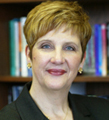INNOVATIVE TEACHING SHOWCASE
Planning for Large Classes
Western's vision is to become the premier public comprehensive university in the country through engaged excellence. This vision sets a remarkably high bar for teaching, one affirmed in the mission statement's pledge that Western provides students with a personalized teaching and learning environment of the highest quality, and that Western instills in graduates a life-long passion for learning and fosters individual curiosity, intellectual rigor, critical thinking, and creativity.
This mission begs questions of specificity: What practical steps can teachers take to create a "learning environment of the highest quality?" How do our faculty know they are fostering "individual curiosity, intellectual rigor, critical thinking, and creativity?" What does "personalized teaching" look like in a small senior seminar? What does it look like in a large lecture?
The faculty highlighted in this year's Innovative Teaching Showcase provide three different answers to these questions through demonstrations and explanations grounded in three widely-diverging fields.
A professor of management, Professor Jason Kanov faced the problem of how to teach his large Management 311 course so that the methods and processes of the course supported its content—particularly the view at the core of his teaching philosophy: managing people is not really about managing the people themselves; it is about "managing the context." Guided by this assumption, Jason asked himself, "What kind of environment will encourage my students to make the choices that I am hoping they will make?" Jason's answers to these questions include a concerted effort to clarify expectations, a detailed and specific syllabus, sharply focused lectures and—less intuitively—essay exams. While atypical for large courses, Jason finds essays the most effective solution to the problem of how to ensure that students apply course concepts to real-life situations. This innovation, while necessarily challenging for him, creates a context in which students are necessarily engaged with the course content and its application.
Professor David Shull faced the problem of how Environmental Science, a topic best explored and applied outside in the environment, can be taught inside. For David this question was magnified by the fact that Environmental Science is Western's largest course, enrolling 440 students per section. David's solutions to this problem include bringing the outside inside with an "Environmental Film Festival," and getting the students outside as service-learning volunteers via Western's Environment Action Discovery (LEAD) program. These efforts, together with carefully structured critical thinking activities, guest lectures, and other innovations, clearly frame his course within Western's vision and mission.
Dr. Larry Symons didn't seek to teach his large class like a small class; instead, he asked how he might reframe his thinking about large classes to teach them better. Pursuing this problem, Dr. Symons considered the research literature on social psychology and was struck that teaching to 150 to 500 people is not unlike reaching consumers. Pursuing this insight, Dr. Symons saw that it was his job to hold his students' attention and to tap into their consumer desire to obtain the information they want: i.e. to teach the psychological concepts he knows are important in a manner that demonstrates their importance to his students.
Professor Symons answers to the problem of how to do this, together with Professor Kanov's and Shull's answers to the problems they faced, are the subject of this year's exciting Innovative Teaching Showcase.


